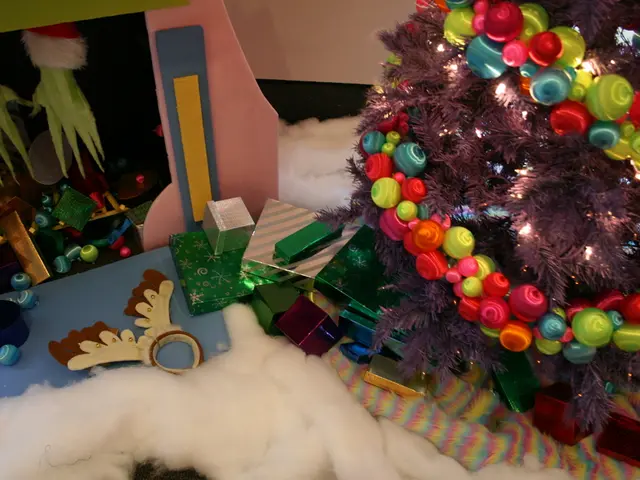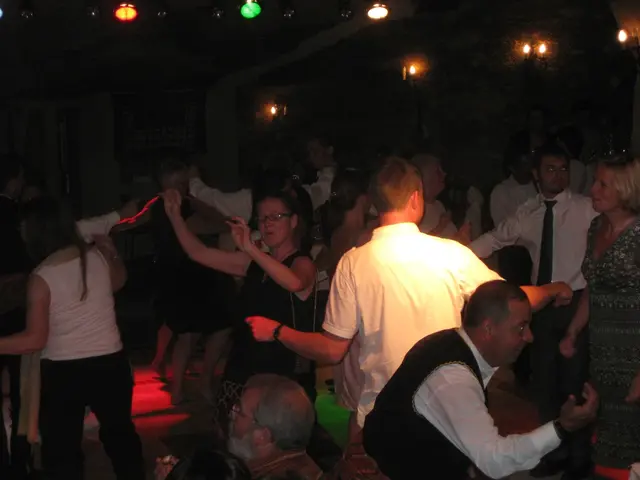Simple Watercolor Depiction of a Fallen Autumn Tree
Painting a fall tree using watercolors can be a delightful and rewarding experience. This article will guide you through the materials needed and essential techniques to create a luminous, textured fall tree painting.
Materials Needed
- Watercolor paints (a palette with autumn colors: yellows, oranges, reds, browns, and greens)
- 100% cotton cold-press watercolor paper (for good pigment absorption and texture)
- Round brushes (various sizes for detail and washes)
- A detail brush (for fine branches and highlights)
- Clean water and soft cloth or paper towel (for adjusting water and blotting)
- Optional: masking fluid (to preserve white areas for highlights)
Step-by-Step Techniques
- Sketch the Tree Outline Lightly
- Lightly sketch the trunk, major branches, and the rough shape of the foliage using a pencil.
- Wet-on-Wet Background Wash
- Wet the paper around the tree area lightly with clean water.
- Apply a loose wash of light autumn colors—light yellows, oranges, and reds—to create a glowing autumn backdrop.
- Let this layer dry slightly but remain soft and blended.
- Paint the Tree Trunk and Branches
- Use a medium round brush with a mix of brown and a touch of black or darker burnt sienna.
- Paint the trunk keeping natural texture by varying brush pressure.
- For branches, use a finer brush; some branches can fade into the background for depth.
- Leave some areas lighter to suggest light hitting the bark.
- Create the Foliage with Layered Leaves
- Use a wet-on-dry technique to paint leaf clumps.
- Use dabs or loose dots with warm colors (oranges, reds, yellows).
- Layer progressively darker shades to add dimension and texture, letting earlier layers dry first to prevent mixing into a muddy color.
- Leave some areas unpainted or lightly colored to simulate highlights and leaf edges—a key technique to maintain light and create the illusion of leaves clustered together.
- Add Details and Texture
- With a smaller detail brush, add thin branches extending into the foliage, small leaf shapes, and texture on the trunk.
- Using layering, deepen the shadows under leaf clusters and on one side of the trunk for depth.
- Optionally, use a dry brush to add rough texture to the bark and foliage.
- Finishing Touches
- Add any background elements such as distant foliage or ground shadows with soft washes.
- Adjust contrast by darkening some areas and lifting color gently from others with a damp brush or cloth.
- Let the painting dry completely.
Tips and Techniques to Keep in Mind:
- Layering: Build up colors gradually with layering rather than heavy pigment in one go.
- Water Control: Adjust water amount on your brush to create soft edges (wet-on-wet) or sharper ones (wet-on-dry).
- Light and Shadow: Keep about 20-30% of the tree area lighter to simulate highlights and avoid a flat appearance.
- Brush Strokes: Use stippling or dabbing motions for leaves to simulate texture and density.
This approach is adapted from tutorials on watercolor tree painting focused on layering, blending, and texture for natural results with vibrant fall colors. While specific to watercolors, these core steps will help you create a luminous, textured fall tree painting.
For a visual guide, you can refer to Jacqueline Jax's watercolor forest tutorial, which demonstrates a peaceful forest tree painted step by step with similar watercolor techniques and materials. Other beginner-friendly videos also showcase watercolor tree textures and layering.
- To enhance the overall atmosphere of your home-and-garden, consider creating a luminous, textured fall tree painting as a stylish addition to your lifestyle.
- After mastering the art of painting a fall tree using watercolors, you could extend your skills to home-and-garden themed watercolor projects, such as botanicals or scenic landscapes.








